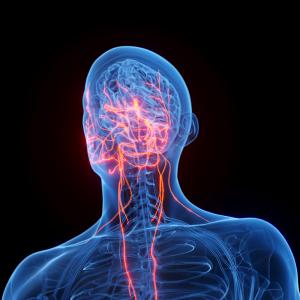Research from NYU Langone Medical Center Could Lead to Advanced Treatments for Social Anxiety, Post-traumatic Stress Disorder & Other Brain Behavioral Issues
Neuroscientists at NYU Langone Medical Center have discovered how the powerful brain hormone oxytocin acts on individual brain cells to prompt specific social behaviors—findings that could lead to a better understanding of how oxytocin and other hormones could be used to treat behavioral problems resulting from disease or trauma to the brain. The findings are to be published online in the journal Nature on April 15.
Until now, researchers say oxytocin, sometimes called the “pleasure hormone,” has been better known for its role in inducing sexual attraction and orgasm, regulating breast feeding, and promoting maternal-infant bonding. But its precise levers for controlling social behaviors were not known.
“Our findings redefine oxytocin as something completely different from a ‘love drug,’ but more as an amplifier and suppressor of neural signals in the brain,” says study senior investigator Robert Froemke, PhD, an assistant professor at NYU Langone and its Skirball Institute of Biomolecular Medicine. “We found that oxytocin turns up the volume of social information processed in the brain. This suggests that it could one day be used to treat social anxiety, post-traumatic stress disorder, speech and language disorders, and even psychological issues stemming from child abuse.”
In experiments in mice, Dr. Froemke and his team mapped oxytocin to unique receptor cells in the left side of the brain’s cortex. They found that the hormone controls the volume of “social information” processed by individual neurons, curbing so-called excitatory or inhibitory signals—and immediately determining how female mice with pups responded to cries for help and attention.
In separate experiments in adult female mice with no pups, and hence no experience with elevated oxytocin levels, adding extra oxytocin into their “virgin” brains led these mice to quickly recognize the barely audible distress calls of another mother’s pups recently removed from their home nest. These adult mice quickly learned to set about fetching the pups, picking them up by the scruffs of their necks and returning them to the nest, all as if they were the pups’ real mother.
This learned behavior was permanent, researchers say; the mice with no offspring continued to retrieve pups even when their oxytocin receptors were later blocked.
According to lead study investigator Bianca Marlin, PhD, a postdoctoral research fellow at NYU Langone: “It was remarkable to watch how adding oxytocin shifted animal behavior, as mice that didn’t know how to perform a social task could suddenly do it perfectly.”
Key to the researchers’ efforts to track oxytocin at work in individual brain cells was use of an antibody developed at NYU Langone that specifically binds to oxytocin-receptor proteins on each neuron, allowing the cells to be seen with a microscope.
“Our future research includes further experiments to understand the natural conditions, beyond childbirth, under which oxytocin is released in the brain,” Dr. Froemke adds.
Funding support for the study was provided by the National Institute on Deafness and Other Communication Disorders and the National Institute of Mental Health, both members of the National Institutes of Health. Corresponding grant numbers are DC009635, DC12557, and T32 MH019524. Additional funding was provided by McKnight and Pew scholarships; Sloan and NYU-Whitehead research fellowships; and a Skirball Institute collaborative research award.
Other researchers involved in the study, conducted entirely at NYU Langone, were Mariela Mitre, BE; James D’amour, BSc; and Moses Chao, PhD, whose laboratory developed the oxytocin receptor antibody used to track hormone activity.
Media Inquiries
David March
Phone: 212-404-3528
david.march@nyumc.org

